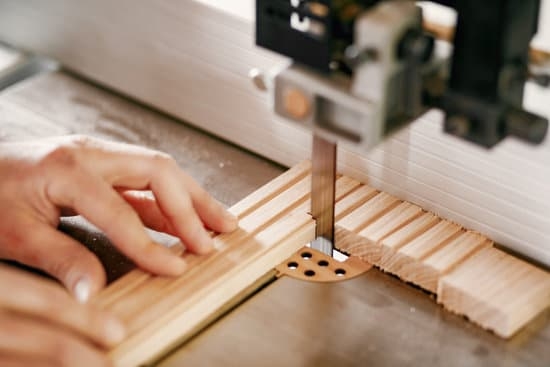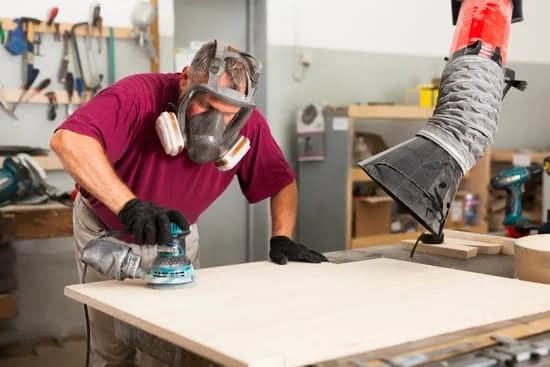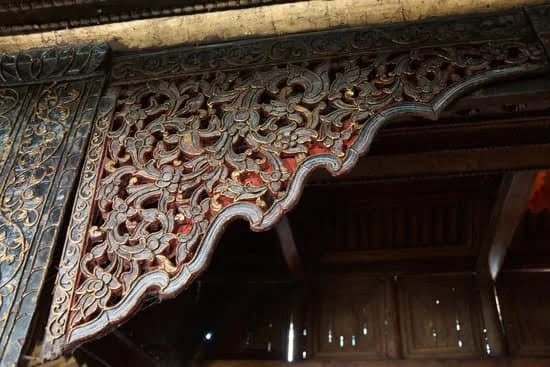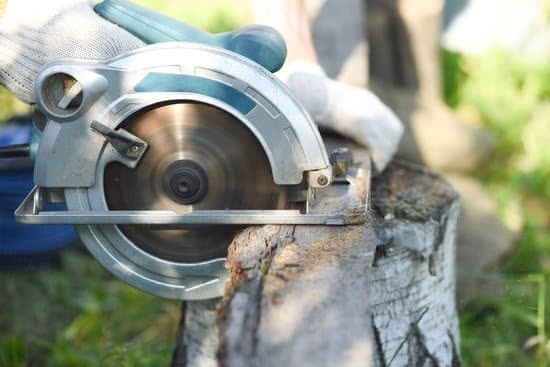Cedar woodworking offers a unique opportunity for artisans and hobbyists to create stunning projects with a versatile and beautiful wood choice. Cedar is renowned for its durability, natural beauty, and aromatic qualities, making it a popular option for various woodworking projects. Whether you are a beginner looking to explore the world of woodworking or an experienced craftsman seeking new challenges, cedar offers endless possibilities for creativity and craftsmanship.
With a rich history dating back centuries, cedar wood has been utilized in a wide range of applications, from ancient constructions to modern woodworking projects. This resilient wood has stood the test of time and continues to be prized for its exceptional characteristics. From its use in traditional building materials to contemporary furniture design, cedar’s versatility and aesthetic appeal make it a sought-after material among woodworkers worldwide.
In this article, we will delve into the fascinating history of cedar wood, explore the benefits of using cedar in woodworking projects, discuss the different types of cedar available for woodworking, and provide valuable tips on tools, supplies, techniques, and maintenance for working with this exceptional material. Whether you are interested in constructing outdoor furniture, decorative items, or intricate carvings, cedar woodworking offers endless opportunities to showcase your skills and create unique pieces that will stand the test of time.
History of Cedar Wood
Cedar wood has a rich history that dates back thousands of years, with its versatile properties making it a prized material for various purposes. In ancient times, cedar wood was used for construction, shipbuilding, and even in religious ceremonies due to its durability and natural resistance to rot and decay. The Egyptians, Greeks, and Romans all recognized the value of cedar wood and utilized it in their architecture and furnishings.
As civilization progressed, cedar wood continued to be valued for its beauty and practicality. In the Middle Ages, cedar was a popular choice for building furniture due to its natural fragrance and resistance to insects. Fast forward to modern times, and cedar woodworking remains as popular as ever. The use of cedar wood has expanded beyond traditional applications to include outdoor furniture, decking, siding, and even musical instruments.
Today, cedar woodworking enthusiasts can explore a wide variety of cedar wood species that offer unique characteristics suited for different projects. Some popular types of cedar wood include Western Red Cedar, Eastern Red Cedar (also known as Aromatic Cedar), Spanish Cedar, and White Cedar.
Each type of cedar wood has its own distinct appearance, scent, and workability that make them suitable for specific woodworking applications. Whether you are looking for a light-colored wood with a subtle grain or a darker wood with a distinct aroma, there is a type of cedar wood that will fit your project needs.
Benefits of Using Cedar Wood in Woodworking Projects
Cedar wood has been a popular choice for woodworking projects for centuries, and its enduring popularity is no surprise. The benefits of using cedar wood in woodworking projects are numerous, making it an ideal material for both beginner and experienced woodworkers alike.
Durability and Strength
One of the key benefits of using cedar wood in woodworking projects is its durability and strength. Cedar is known for being resistant to rot, decay, and insect damage, making it an excellent choice for outdoor furniture or other projects that will be exposed to the elements. Its natural oils also provide added protection against moisture, helping to prolong the life of your creations.
Aesthetics
In addition to its practical benefits, cedar wood is also prized for its aesthetic appeal. With its rich grain patterns, warm tones, and distinct aroma, cedar adds a touch of natural beauty to any woodworking project. Whether you’re building a rustic cedar chest or a modern shelving unit, cedar’s unique look can enhance the overall design and make your project stand out.
Easy to Work With
Another advantage of cedar wood in woodworking projects is how easy it is to work with. Cedar is relatively lightweight compared to other hardwoods but still offers excellent stability and durability. It cuts smoothly, sands easily, and accepts stains and finishes well, making it a versatile choice for a wide range of woodworking techniques. Whether you’re crafting intricate details or simple designs, cedar wood provides a user-friendly experience for woodworkers of all skill levels.
Types of Cedar Wood
Cedar wood is a popular choice among woodworkers due to its versatility, durability, and natural beauty. There are several different varieties of cedar wood that can be used in woodworking projects, each with its own unique characteristics and qualities.
One of the most common types of cedar used in woodworking is Western Red Cedar. This type of cedar is known for its vibrant reddish-brown color, straight grain, and resistance to rot and decay. It is often used for outdoor projects such as fences, decks, and outdoor furniture due to its natural ability to withstand the elements.
Another popular variety of cedar for woodworking is Eastern Red Cedar. This type of cedar has a rich reddish color with streaks of white sapwood, giving it a unique appearance. Eastern Red Cedar is often used for interior projects such as closets, chests, and decorative panels due to its aromatic scent and insect-repellent properties.
Spanish Cedar is another variety that is commonly used in woodworking projects. This type of cedar has a pinkish to reddish-brown color with a fine texture and straight grain. Spanish Cedar is popular for making cigar humidors and interior millwork due to its natural resistance to insects and decay.
When selecting the right type of cedar wood for your woodworking project, consider the specific characteristics and qualities that each variety offers to ensure that your finished product meets your design requirements and durability needs. Whether you choose Western Red Cedar, Eastern Red Cedar, Spanish Cedar or another variety, working with cedar wood can add beauty and functionality to your woodworking creations.
Tools and Supplies Needed for Cedar Woodworking Projects
Essential Tools for Cedar Woodworking
When beginning a cedar woodworking project, it is important to have the right tools on hand to ensure precision and efficiency. Some essential tools for working with cedar wood include a table saw, miter saw, planer, chisels, hammer, drill, and measuring tape. These tools will help you accurately cut, shape, and assemble your cedar wood pieces to create beautiful finished products.
Supplies for Cedar Wood Finishing
In addition to tools, you will also need various supplies for finishing your cedar woodworking projects. Sandpaper of different grits will be necessary for smoothing out rough edges and surfaces. Wood glue will be essential for securely joining pieces together. Additionally, stain or sealant can be used to enhance the natural beauty of the cedar wood and protect it from damage over time. Having these supplies on hand will help you achieve professional results with your projects.
Safety Gear for Cedar Woodworking
Safety should always be a top priority when working with power tools and sharp objects in woodworking. Be sure to wear the appropriate safety gear such as safety glasses, ear protection, dust mask or respirator, and gloves when handling cedar wood and using woodworking tools. These precautions will help protect you from potential injuries and ensure a safe work environment as you bring your cedar woodworking ideas to life.
Step-by-Step Guide to Creating a Stunning Cedar Woodworking Project
Cedar woodworking projects are not only popular for their beautiful appearance but also for their versatility and durability. Whether you are a beginner or an experienced woodworker, creating a stunning cedar woodworking project can be a rewarding experience. In this step-by-step guide, we will walk you through the process of crafting a wooden planter box using cedar wood.
First, gather all the necessary tools and supplies for your project. For a cedar woodworking project like a planter box, you will need items such as a saw, drill, measuring tape, wood glue, screws, and of course, cedar wood boards. Make sure to choose high-quality cedar wood that is free from knots and defects to ensure a beautiful finished product.
Next, measure and cut the cedar wood boards according to the dimensions of your planter box design. Use a saw to make precise cuts and assemble the pieces using wood glue and screws. You can add decorative touches like beveled edges or intricate designs to customize your project further. Once the assembly is complete, sand the surfaces to remove any rough edges or splinters.
To enhance the natural beauty of the cedar wood, consider applying a protective finish such as varnish or outdoor sealant. This will not only protect your project from the elements but also highlight the rich color variations and unique grain patterns of the cedar. With proper care and maintenance, your stunning cedar woodworking project will stand the test of time and become a cherished addition to your home or garden.
| Tools | Supplies |
|---|---|
| Saw | Wood Glue |
| Drill | Screws |
| Measuring Tape | Cedar Wood Boards |
Finishing Techniques for Cedar Wood
When it comes to cedar woodworking projects, one of the most essential aspects is the finishing techniques used to enhance the natural beauty of this versatile wood. Cedar is known for its rich color variations and distinct grain patterns, making it a popular choice among woodworkers for creating stunning pieces. By applying the right finishing techniques, you can not only protect your cedar woodworking project but also bring out its inherent beauty.
To effectively finish a cedar woodworking project, it’s crucial to use high-quality products that are specifically designed for cedar wood. The type of finish you choose will depend on your desired end result, whether you want to maintain the natural color of the cedar or add a different shade to complement your overall design. Here are some popular finishing techniques for cedar wood:
- Clear Sealers: These sealers provide protection against moisture and UV rays while allowing the natural color and grain of the cedar to shine through.
- Stains: Stains come in a variety of shades and can be used to add depth and richness to cedar wood while still showcasing its natural beauty.
- Varnishes: Varnishes create a protective layer on top of the cedar wood, enhancing its durability and providing a glossy finish.
In addition to choosing the right finish for your cedar woodworking project, proper application is key to achieving professional results. Make sure to thoroughly sand the surface of the wood before applying any finish to ensure a smooth and even coat.
Whether you prefer a matte or shiny finish, take your time during this step to guarantee a flawless result that highlights the unique characteristics of your cedar wood creation. By investing time and effort into finishing techniques, you can elevate your cedar woodworking projects from good to extraordinary.
Maintenance Tips for Cedar Woodworking Projects
Cedar woodworking projects are not only beautiful but also durable, making them a popular choice for both indoor and outdoor furniture. To ensure your creations maintain their beauty for years to come, proper maintenance is essential. One of the key maintenance tips for cedar woodworking projects is regular cleaning.
Dust, dirt, and grime can build up on the surface of cedar wood over time, dulling its appearance. To keep your cedar woodworking projects looking new, simply wipe them down with a damp cloth or soft brush regularly.
In addition to regular cleaning, it is important to protect cedar woodworking projects from the elements. Cedar wood is naturally resistant to rot and decay, but prolonged exposure to moisture can still cause damage. To prevent this, consider applying a sealant or waterproofing finish to your cedar woodworking projects if they will be used outdoors. This will help protect the wood from rain, snow, and humidity, extending its lifespan and keeping it looking fresh.
Another important maintenance tip for cedar woodworking projects is to inspect them regularly for any signs of wear or damage. Check for cracks, splits, or loose joints that may need to be repaired. By catching issues early on, you can prevent further damage and ensure your cedar woodworking projects last for years to come. With proper care and maintenance, your beautiful cedar creations will continue to bring joy and elegance to your home or outdoor space.
Inspiration for Cedar Woodworking Projects
Cedar woodworking offers a wide array of opportunities for crafting stunning and unique projects. Whether you are a seasoned woodworker or just starting out, the versatility and beauty of cedar wood make it an excellent choice for creating a variety of items. From furniture to outdoor structures, there is no shortage of inspiration when working with cedar.
One popular idea for cedar woodworking projects is creating outdoor furniture such as Adirondack chairs, benches, and tables. The natural resistance of cedar to insects and decay makes it the perfect choice for these pieces that will be exposed to the elements. Additionally, the rich hues and unique grain patterns of cedar add an extra touch of elegance to any outdoor space.
Another exciting option for cedar woodworking projects is incorporating live edge slabs into your designs. These raw-edged pieces of wood highlight the natural beauty of the tree from which they came, adding a rustic yet sophisticated touch to any project. Whether used as tabletops, shelves, or mantels, live edge cedar pieces are sure to impress with their organic charm and character.
With a bit of creativity and craftsmanship, the possibilities are endless when it comes to creating one-of-a-kind cedar woodworking projects. Let your imagination run wild and discover the endless potential that this versatile wood has to offer in your next creation.
Frequently Asked Questions
Is Cedar Good for Woodworking?
Cedar is a popular choice for woodworking due to its durability, natural resistance to decay and insects, and beautiful grain patterns. It is relatively lightweight and easy to work with, making it ideal for various projects ranging from outdoor furniture to indoor cabinetry.
What Are the Cons of Cedar Wood?
Despite its many advantages, cedar wood also has some cons to consider. One of the main drawbacks is that cedar can be more expensive compared to other types of softwood.
Additionally, while cedar is naturally resistant to decay and insects, it may still require regular maintenance to prolong its lifespan. Another potential downside is that cedar can be prone to splitting or cracking if not properly cared for or seasoned.
Are Cedar Logs Worth Money?
Cedar logs can indeed be worth money, especially if they are of high quality and have desirable characteristics like straight grain patterns or large diameters. Cedar wood is sought after for its natural beauty and distinct aroma, making it valuable in the woodworking industry.
The value of cedar logs can also vary depending on the market demand for cedar products at any given time. Overall, if you have access to quality cedar logs, there may be potential to make a profit by selling them to lumber mills or specialty wood shops.

Hi everyone! I’m a woodworker and blogger, and this is my woodworking blog. In my blog, I share tips and tricks for woodworkers of all skill levels, as well as project ideas that you can try yourself.





